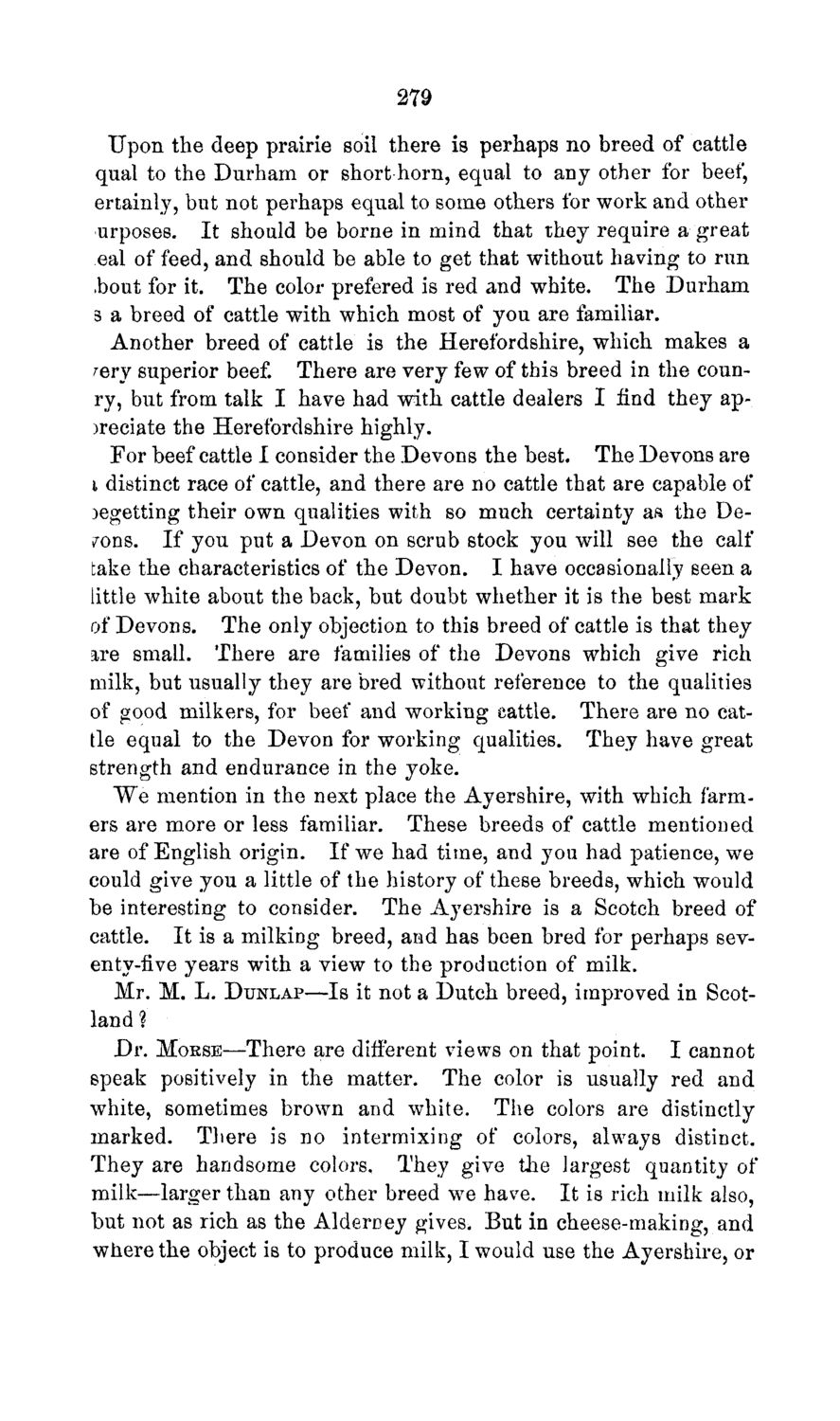| |
| |
Caption: Board of Trustees Minutes - 1869
This is a reduced-resolution page image for fast online browsing.

EXTRACTED TEXT FROM PAGE:
279 Upon the deep prairie soil there is perhaps no breed of cattle qua! to the Durham or short horn, equal to any other for beef, ertainly, but not perhaps equal to some others for work and other urposes. It should be borne in mind that they require a great eal of feed, and should be able to get that without having to run ,bout for it. The color prefered is red and white. The Durham s a breed of cattle with which most of you are familiar. Another breed of cattle is the Herefordshire, which makes a rery superior beef. There are very few of this breed in the counry, but from talk I have had with cattle dealers I find they ap>reciate the Herefordshire highly. For beef cattle I consider the Devons the best. The Devons are i distinct race of cattle, and there are no cattle that are capable of >egetting their own qualities with so much certainty aa the Demons. If you put a Devon on scrub stock you will see the calf take the characteristics of the Devon. I have occasionally seen a little white about the back, but doubt whether it is the best mark of Devons. The only objection to this breed of cattle is that they are small. There are families of the Devons which give rich milk, but usually they are bred without reference to the qualities of good milkers, for beef and working cattle. There are no cattle equal to the Devon for working qualities. They have great strength and endurance in the yoke. "We mention in the next place the Ayershire, with which farmers are more or less familiar. These breeds of cattle mentioned are of English origin. If we had time, and you had patience, we could give you a little of the history of these breeds, which would be interesting to consider. The Ayershire is a Scotch breed of cattle. It is a milking breed, and has been bred for perhaps seventy-five years with a view to the production of milk. Mr. M. L. DUNLAP—Is it not a Dutch breed, improved in Scotland? Dr. MORSE—There are different views on that point. I cannot speak positively in the matter. The color is usually red and white, sometimes brown and white. The colors are distinctly marked. There is no intermixing of colors, always distinct. They are handsome colors. They give the largest quantity of milk—larger than any other breed we have. It is rich milk also, but not as rich as the Alderney gives. But in cheese-making, and where the object is to produce milk, I would use the Ayershire, or
| |